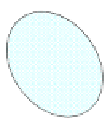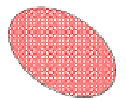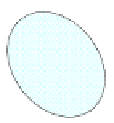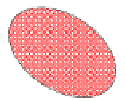Information Technology Reference
In-Depth Information
(a)
(a)
(b)
(b)
(c)
(c)
Fig. 2
A schematic description of the relations between classes in (a) binary classification,
(b) multi-class, and (c) multi-label classification. The class boundaries can be of any shape
One approach to multi-class classification is to use classifiers which are specif-
ically designed for multi-class classification. Another choice is to reduce the mul-
ti-class problem into a set of binary classifiers [2] and then return the class with
the highest classification status or membership value (CSV), or optimize the mar-
gin-based loss function, i.e., return the closest class or the class best associated
with the examined sample. This is a two-stage process, the first stage comprises
the binary classifiers, the second stage is the combination or the comparison of the
classification results in order to find the best candidate. The approach of binary
classifiers can be divided in turn into two main approaches: one-against-all, in
which each class is compared to all others, and one-against-one [54], in which
each class is compared to each of the other classes [63]. A schematic description
of these two approaches can be seen in Figure 3. A common challenge to both of
these approaches is how to combine the binary classification results to a meaning-
ful and coherent inference result. An issue that arises from dividing the classifica-
tion problem into several smaller classifiers is if the same features have to partici-
pate in all the classifiers or if different sets of features can yield better
results.
5.3 Multi-label Classification
In multi-label classification, a classifier or a classification system has to choose
between more than two classes, and each sample can be associated with a variable
number of classes, i.e. each sample is assigned
at least
one class-label. In compar-
ison to multi-class classification, the output of the classification result, i.e. the set
of target classes, increases. Each sample can be associated with a variable number
of classes at the same time. Therefore, the number of target classes has to be se-
lected. As in multi-class classification, multi-label classification can be either con-
structed of binary classifiers, or be specifically tailored for multi-label
classification.


































































































































































































































































Search WWH ::

Custom Search